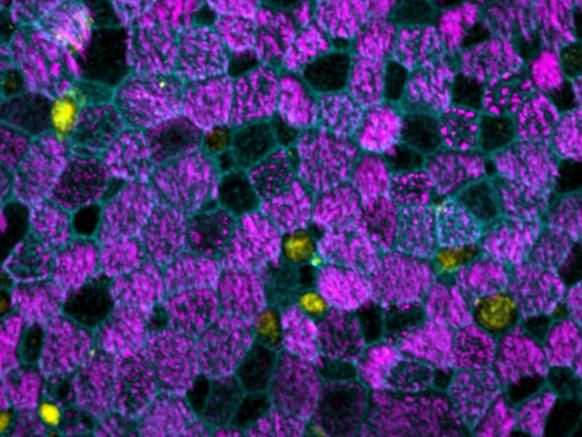Transcription Factor Scan Identifies Genetic Cause for Inherited Blindness.
Multinational team effort of Regensburg´s Institute of Human Genetics, Washington University in St. Louis, other partners, and Genomatix elucidated a transcriptional network in photoreceptors and thereby identified a novel retinal disease gene
retinitis pigmentosa is an inherited eye disorder characterized by progressive loss of vision that in many instances leads to legal blindness at the end stage.
In a ChIP-Seq based approach, the researchers identified a key regulatory role of the transcription factor Crx (Cone-rod homeobox) in the expression of retina-specific genes and thus described an important genetic basis for visual perception. In-depth analysis of Crx mediated regulation in photoreceptors with latest technology provided by Genomatix lead then to the identification of nonsense mutations in the human FAM161A gene, which are responsible for RP28-associated recessive retinitis pigmentosa. The group applied the Genomatix Genome Analyzer (GGA) to evaluate data from Crx chromatin immunoprecipitation coupled to massively parallel sequencing.
Original publication: Corbo JC, Lawrence KA, Karlstetter M, Myers CA, Abdelaziz M, Dirkes W, Weigelt K, Seifert M, Benes V, Fritsche LG, Weber BH, Langmann T.; "CRX ChIP-seq reveals the cis-regulatory architecture of mouse photoreceptors."; Genome Res. 2010; 20(11):1512-25.
Langmann T, Di Gioia SA, Rau I, Stöhr H, Maksimovic NS, Corbo JC, Renner AB, Zrenner E, Kumaramanickavel G, Karlstetter M, Arsenijevic Y, Weber BH, Gal A, Rivolta C.; "Nonsense mutations in FAM161A cause RP28-associated recessive retinitis pigmentosa."; Am J Hum Genet. 2010; 87(3):376-81.
Topics
Organizations
Other news from the department science

Get the life science industry in your inbox
By submitting this form you agree that LUMITOS AG will send you the newsletter(s) selected above by email. Your data will not be passed on to third parties. Your data will be stored and processed in accordance with our data protection regulations. LUMITOS may contact you by email for the purpose of advertising or market and opinion surveys. You can revoke your consent at any time without giving reasons to LUMITOS AG, Ernst-Augustin-Str. 2, 12489 Berlin, Germany or by e-mail at revoke@lumitos.com with effect for the future. In addition, each email contains a link to unsubscribe from the corresponding newsletter.
Most read news
More news from our other portals
Last viewed contents
Relationships inside a cell - Scientists publish the first RNA interactome of the human nucleus



















































